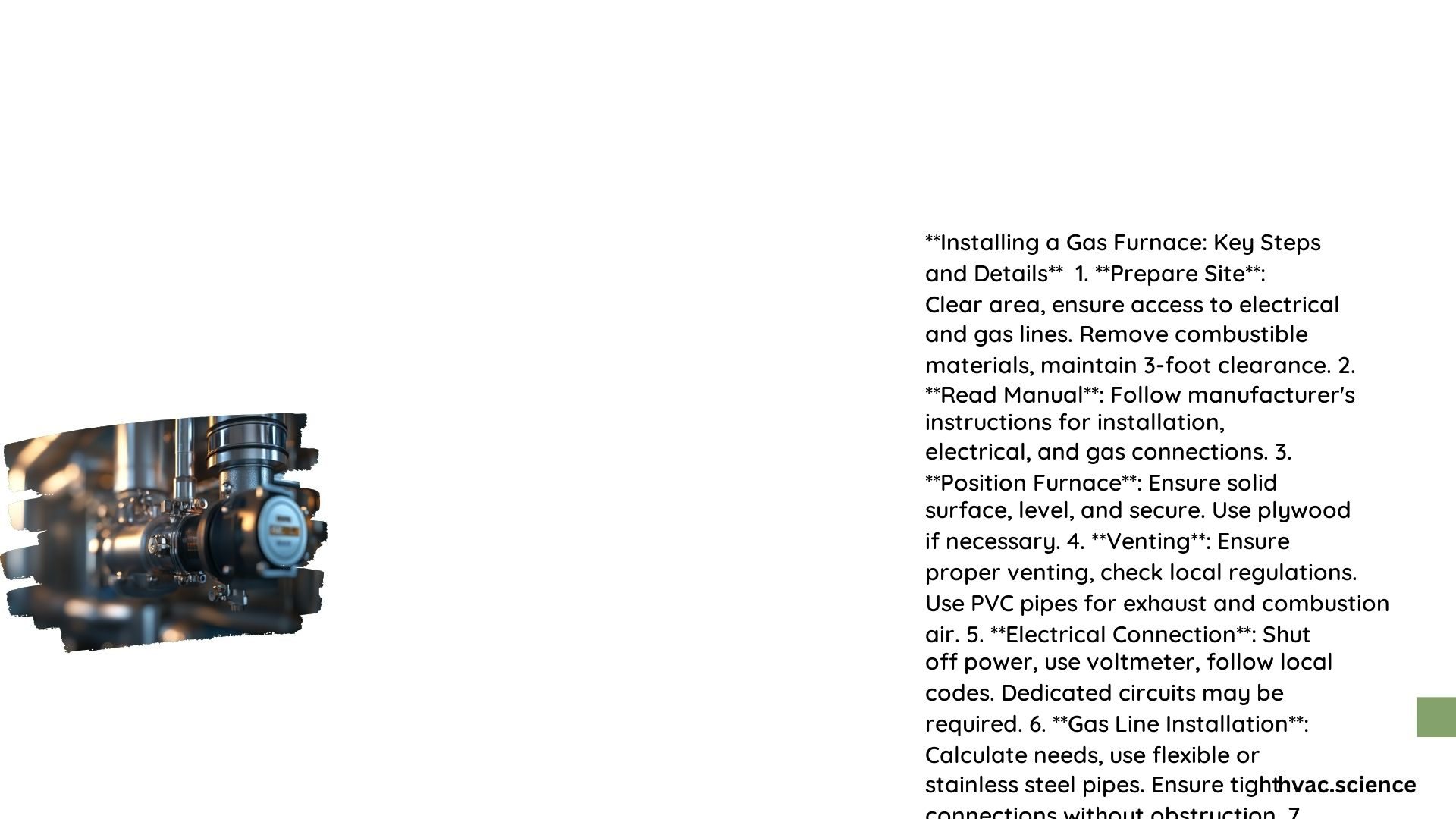Comprehensive Guide to Installing a Gas Furnace
Upgrading your home’s heating system with a new gas furnace can significantly improve energy efficiency and comfort. This comprehensive guide will walk you through the step-by-step process of installing a gas furnace, from assessing your home’s needs to the final inspection and testing. Whether you’re a DIY enthusiast or considering hiring a professional, this guide will provide you with the necessary information to ensure a successful gas furnace installation.
What to Consider Before Installing a Gas Furnace?
How to Assess Your Home’s Heating Needs?
Before installing a new gas furnace, it’s essential to evaluate your home’s heating requirements. Factors such as the size of your home, insulation levels, and local climate will determine the appropriate furnace size and efficiency. Carefully consider these factors to ensure you choose the right furnace for your home.
How to Choose the Right Gas Furnace?
Selecting the right gas furnace is crucial for optimal performance and energy efficiency. Look for high-efficiency models (94% or higher AFUE) with features like variable-speed blowers and the correct heating capacity for your home. Popular brands like Goodman, Carrier, and Lennox offer a wide range of reliable and energy-efficient gas furnace options.
How to Prepare the Installation Site?
Ensure the installation site is clean, clear, and accessible. This includes having easy access to the existing furnace, electrical panel, and gas supply lines. Proper preparation will make the installation process smoother and safer.
Step-by-Step Guide to Installing a Gas Furnace
How to Remove the Old Furnace?
Begin by disconnecting the power, gas supply, and ductwork from the old furnace. Carefully remove the old unit from the installation site, taking note of any specific requirements or considerations.
How to Install the New Gas Furnace?
Unbox and inspect the new furnace, then align it with the plenum (the main distribution point of the ductwork). Slide the new furnace into its designated space and secure it using screws, ensuring proper clearance.
How to Connect the Ductwork?
Connect the new furnace to the existing ductwork, creating airtight and heat-resistant joints using silver foil tape and duct sealant. Proper ductwork connections are crucial for efficient heat distribution.
How to Connect the Fuel Source and Electrical Supply?
Connect the gas supply lines to the gas valve on the new furnace, and then connect the electrical wiring, ensuring proper circuit completion.
How to Install the Venting and Piping?
Connect the vent pipes to ensure the safe removal of combustion gases. Ensure the vent pipes are configured and sealed thoroughly to prevent leaks. Use hard pipe for gas connections unless in an earthquake-prone area.
How to Install the Condensate Drain?
Properly connect the condensate drain and ensure it is primed before start-up. The condensate system should not be exposed to temperatures below freezing.
How to Perform the Furnace Start-Up and Testing?
Conduct a Delta T test to ensure the furnace is operating correctly. Check for gas leaks using a gas leak detector and ensure all connections are secure.
Safety Precautions and Checks
How to Detect Gas Leaks?
Use a gas leak detector to check all gas connections. Alternatively, apply a mixture of equal parts water and dish soap to connections; bubbles indicate a leak.
How to Ensure Proper Combustion and Ventilation Air Supply?
Ensure the furnace has adequate combustion air intake and exhaust venting. Use PVC pipes for combustion air and exhaust, routing them to an inconspicuous place outside the house.
What Safety Gear and Precautions Should Be Taken?
Wear safety gear, including gloves and safety glasses, and shut off fuel sources before beginning work. Ensure a thorough understanding of the installation process.
Permits, Inspections, and Sizing
What Local Codes and Permits Are Required?
Comply with local, state, or national codes pertaining to gas furnace installation and obtain the necessary permits before starting the installation.
How to Ensure Proper Furnace Sizing?
Calculate the heating load of your home based on factors such as insulation, windows, and climate. Use a load calculation tool or consult with an HVAC professional to determine the correct furnace size.
Gas Furnace Inspection Checklist
What Should Be Checked During a Combustion Analysis?
Perform a combustion analysis to ensure the furnace is burning fuel efficiently and safely.
How to Inspect the Heat Exchanger?
Inspect the heat exchanger for any signs of damage or leaks, and ensure it is clean and free from debris.
What Should Be Checked in the Venting System?
Verify the venting system is properly configured and sealed, and ensure the vent pipes are clear of obstructions.
How to Inspect the Electrical and Gas Connections?
Check all electrical and gas connections for security and signs of wear or damage.
How to Inspect the Condensate Drain?
Ensure the condensate drain is functioning correctly and not clogged, and check the condensate system for any signs of freezing or damage.
Inspection Frequency
How Often Should a Gas Furnace Be Inspected?
Perform a comprehensive inspection annually to ensure safety and efficiency, and inspect the furnace before the heating season to ensure it is in good working condition.
Labor Costs and Popular Brands
What Are the Average Labor Costs for Gas Furnace Installation?
Labor costs for a gas furnace installation can range from $500 to $2,000, depending on the complexity of the installation and the location.
What Are Some Popular Gas Furnace Brands?
Some of the most popular gas furnace brands include Goodman, Carrier, Lennox, Trane, and Rheem.

